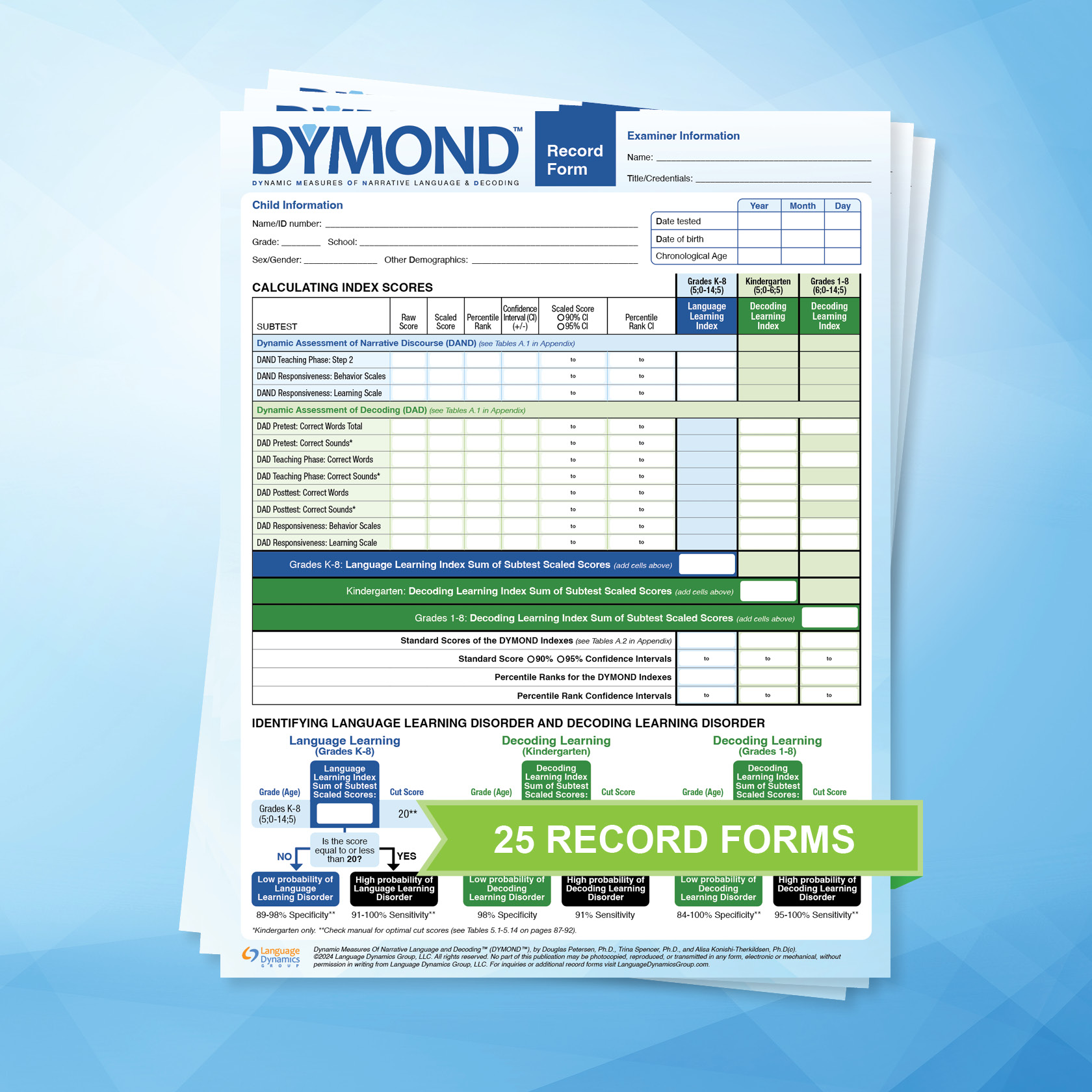Learn about the four subtests of the DYMOND™:
Subtest 1: Dynamic Assessment of Narrative Discourse (DAND)
Assessment Type: Dynamic Assessment
Purpose: Identify language learning disorder (e.g., DLD); Identify strengths, weaknesses, and instructional targets related to language.
- The DAND subtest was designed to measure language learning potential of complex language that children are expected to understand and produce in most academic settings. It provides critical insights into a child’s ability to learn and use complex language, identifying areas that may benefit from targeted instruction.
Subtest 2: Dynamic Assessment of Inferential Word Learning (DAIWL)
Assessment Type: Dynamic Assessment
Purpose: Identify strengths, weaknesses, and instructional targets related to a child’s ability to infer the meaning of unfamiliar words using linguistic context clues.
- The DAIWL helps identify difficulties in inferential word learning that are due to a language disorder. By assessing how effectively children can learn and apply inferencing strategies, this subtest provides valuable insights into vocabulary learning potential and highlights areas where targeted instruction may be needed.
Subtest 3: Dynamic Assessment of Decoding (DAD)
Assessment Type: Dynamic Assessment
Purpose: Identify decoding learning disorder (e.g., dyslexia); Identify strengths, weaknesses, and instructional targets related to decoding.
- The DAD subtest evaluates a child’s ability to decode nonsense words and their ability to learn decoding strategies during a brief instructional session. For grades K-1, the assessment focuses only on Closed Syllable words. For grades 2-8, there are six levels of decoding that the assessment ascertains, each getting more difficult: Closed Syllables, Vowel-Consonant-E, Vowel Teams, Vowel-R-Controlled, Advanced Word Forms, and Complex Vowels.
Subtest 4: Rapid Automatized Naming (RAN)
Assessment Type: Static/Processing Dependent Measure
Purpose: Identify strengths, weaknesses, and instructional targets related to phonological processing ability, which is strongly linked to decoding ability.
- The RAN subtest measures a child’s phonological processing ability, a key factor in reading fluency. By measuring the speed and accuracy of phonological retrieval, the RAN subtest helps determine whether slow processing may be contributing to reading difficulties.







